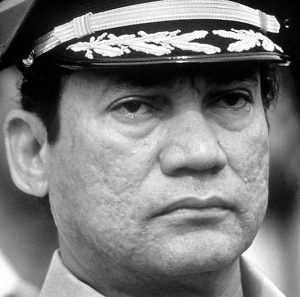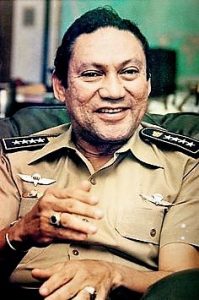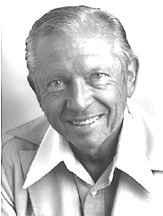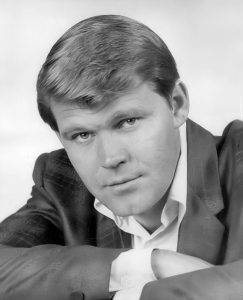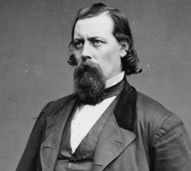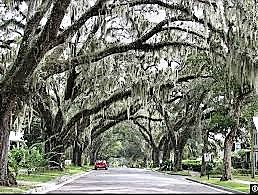
Brooksville, Florida, Hal Neely’s last home
Previously in the book: Nebraskan Hal Neely began his career touring with big bands and worked his way into Syd Nathan’s King records, producing rock and country songs. Along the way he worked with James Brown, the Godfather of Soul, who referred to Neely as his favorite uncle. Eventually he became one of the owners of Starday-King, until the other owners bought him out. He found himself sitting further back in music industry room. He eventually moved to Florida.
Brooksville, Florida, became Hal Neely’s best friend; both the town and the man were old, mellow, and had come to terms with their pasts. This friendship came about by accident. In 2005 Hanneman was returning to his home in Orlando from an appointment in Tampa when he took a wrong highway and wound up in this small town with old homes and streets canopied with Spanish moss-strewn oak trees. Brooksville’s out-of-the-way serenity struck a chord with Hanneman so he decided to build a house there. He realized that Neely’s health was failing and wanted him to move to Brooksville, too. After his doctor confirmed his condition, Neely agreed to give Hanneman power of attorney. At first he lived in a small apartment but soon moved to an assisted living facility called Tangerine Cove, a block from the old brick courthouse.1
Brooksville was founded in 1856, and citizens decided to name the town in honor of U.S. Representative Preston Brooks of South Carolina after Brooks took a cane to U.S. Senator Charles Sumner of Massachusetts during an impassioned debate on slavery. Sumner made a disparaging remark about Brooks’ uncle, which provoked the gentleman from South Carolina to attack the older man from Massachusetts. Sumner took refuge under his desk as Brooks repeatedly swung his cane at him. Finally Sumner tried to crawl from the chamber but Brooks continued his assault. Blood stained the marble floor of Congress. Everyone in the north was horrified. Some historians pointed to the incident as the first bloodshed in the Civil War. Folks in the south, however, applauded Brooks, and the residents of a new Florida village took his name.2
By the first decade of the new millennium Brooksville had left its history behind with an integrated city council and bestowed its highest honor “The Great Brooksvillian” on a black civil rights leader of the 1870s who had been shot to death after performing a marriage ceremony between a black man and a white woman.3
Neely maneuvered about Main Street in his motorized chair, making friends along the way. The second Saturday of every month Neely rolled across the street and down a block behind the county library to a band shell. The local fine arts council received a grant to put on free concerts, and Neely attended every one of them, whether they featured garage bands, nostalgia rock groups composed of local teachers or special evenings of former stars, like the Coasters. When the grant money began to run out, Neely became a cheerleader throughout downtown to raise money to keep the concerts going.
One night he went to a downtown home decor shop where a martini reception was being held in honor of Carl Gardner, one of the original Coasters. Gardner was promoting his autobiography, “Yakety Yak I Fought Back.” Neely spun his wheel chair up to the desk where Gardner sat signing books and copies of CDs of his all-time hits, “Charlie Brown,” “Along Came Jones,” and “Little Egypt,” Every time a guest tried to take a picture Gardner put on his signature grin and gave a thumbs up. Neely, on the other hand, continued his conversation as though photographers were part of his everyday life.
“The music industry was filled with producers who were out to cheat you,” Gardner told the group. Then he pointed at Neely. “But this is the nicest man in the world.”
Because Neely was never voted into the Rock ‘n’ Roll Hall of Fame or the Country Music Hall of Fame, he appreciated personal statements of gratitude like the one accorded him by Gardner, but many of his old friends and business associates–the ones who saw Neely in his prime–were disappearing.
His chief rival in claiming the discovery of James Brown, Ralph Bass, died March 5, 1997. Bass was inducted into the Rock ‘n’ Roll Hall of Fame in 1991.4 His associate at King Records, Henry Glover, died April 7, 1991, and was inducted into the Blues Hall of Fame in 2013.5 Loyal King associate Jim Wilson died Jan. 30, 1996.6 The brothers who brought about his demise at Starday-King, Johnny and Freddy Bienstock, died in 2006 and 2009, respectively.7 Songwriter Jerry Lieber died in 2011, survived by his partner Mike Stoller.8 Moe Lytle, whom Art Williams said Neely absolutely hated, was still running Gusto Records in 2013.9
In April of 2005 Don Pierce, with whom he had worked at Starday-King in Nashville died at age 89. He had not been voted into the Country Music Hall of Fame either.10 However, Pierce expressed feelings toward the end of his life about Neely that were less than friendly.
Nathan Gibson, author of “The Starday Story,” said Pierce specifically asked him not to involve Hal Neely in his project.
“As I understand it,” Gibson said, “when Hal took over at Starday, many believed he was the cause of Starday’s downfall…excessive spending, poor recording choices, clashing personality with many artists , business/personal relationship woes, and an overall carelessness for the business. Several individuals told me they loved Starday, best job they ever had, but they quit because they couldn’t stand working for Hal.”
During several interviews Gibson said participants told him that if he wanted to know about Hal Neely, he would have to turn off his tape recorder, and they would tell him about Hal Neely. The general feeling among those being interviewed was one of animosity and uneasiness.
“He remains a great mystery to me,” Gibson said, “and to many others.” 11
Those feelings were not shared by everyone. Author Randy McNutt said, “Hal was a good record man, and he was very helpful to me when I was writing the chapter on King Records for ‘Little Labels—Big Sound.’”12
On his birthday a call came into Tangerine Cove for Neely, and the staff could not believe it was Dolly Parton, who had done business with Neely and Starday-King. She wished him a happy birthday.13
Another fan was Al Nicholson, road manager for the Platters when the group toured in 1970 as part of the world’s fair in Okinawa. He also worked with the Drifters and the Coasters. By the middle 2000s Nicholson was entertaining in nursing homes in Florida, and during a performance at Tangerine Cove he looked into the audience to see a familiar face. He had met Neely while working with the Coasters. They renewed their friendship and spent many hours talking about old times, especially with Neely emphasizing his lawsuit against James Brown.
Ever the deal-maker, Neely used his influence with the organizers of the town’s band shell concert to feature Nicholson as an opening act.
“The crowd was screaming, and I had an autograph session with a line of thirty people.” Nicholson continued his visits to Tangerine Cove for long chats with Neely. “He was quite a character,” Nicholson said. “Sometimes he would get confused about his groups. But Hal’s stories were always consistent which gave the impression they were true.”14
Among his new friends were the members of the Brooksville Church of Christ which was about four or five blocks south of downtown. Neely’s grandfather was the first Episcopalian minister west of Mississippi. He grew up as a Methodist in Nebraska away from the influence of tobacco and booze. He was a self-described Irish/Scotch Protestant, joining and supporting the Presbyterian Church for many years. He felt right at home at the Brooksville Church of Christ.
One of his favorite activities in Brooksville was going to a Bible class taught by Abe Guillermo, long-time church member and lay minister. Neely called Guillermo the best damn Christian scholar he ever met.
After three months of going to church, Neely told Guillermo he was ready to be baptized. Neely said he had been raised in a Christian family and belonged to churches but never learned about Jesus until Guillermo taught him. Seventeen church members gathered at a member’s home for the baptism which was conducted in the family’s swimming pool. Neely approached the pool using his walker and gave a two-minute talk about his conversion. Guillermo gently guided him into the pool and immersed him in the water. Neely emerged exultant.
“I did it! I did it!”
If any of the church members thought Neely’s conversion was going to change his life-long use of common profanities, they were in for a disappointment. At the luncheon served afterwards, Neely spouted “damn this” and “damn that” a few times before Guillermo interrupted.
“Hal, we’re going to have to baptize your dictionary.”15
Neely had some regrets in his life, church minister Vic McCormick said he told him, but they were mostly in his private life. His first marriage ended in divorce, and there was a lot of bad feeling in his separation from his second wife. But he expressed no regrets in his business life.16
“Money was not my priority,” he told Guillermo. “You can’t change a thing. Now I have a new life.” He also told them he had warned James Brown not to go back to his same old crowd which had gotten him into trouble in the first place.
Brooksville accepted Neely as one of their own, albeit a man with a mysterious and exciting past. “To see him (Neely) you wouldn’t have known he had been big in the music business,” Guillermo said.
Another thing Neely told him was that he had his music catalogue in a warehouse. Originally he was going to leave it to University of South Florida, but he decided to give it to the Bible teacher instead. And he had royalties being held by a Memphis music company. Those would go to the church. His lawyer was a member of the Brooksville Church of Christ also. After Neely passed on, they were to contact the lawyer.17
***
James Brown died Dec. 25, 2006 of congestive heart failure and pneumonia at the age of 73. In his final years Brown was still performing and still the Hardest Working Man in Show Business. He scheduled eighty-one shows for 2006–including stops in Europe, Morocco, Tokyo, Estonia, Turkey and the United States.
He had also become a fixture in the charitable community of Augusta, Georgia. At Thanksgiving he gave away turkeys to poor families. On Dec. 20 he participated in a toy giveaway. He went to a dental appointment immediately after the toy distribution event, but when the dentist saw his physical condition he ordered Brown admitted to Emory Crawford Young Hospital where he died on Christmas Day.
Brown had three funeral services, one of which was at the Apollo Theater in Harlem where he had produced his live album with the help of Hal Neely.18
***
Guillermo said the London Times called Neely after Brown’s death and asked him how he was doing.
“Oh,” Neely replied, “I’ve found Jesus.”19
***
James Brown was inducted into the Rock ‘n’ Roll Hall of Fame in 1987 as was Syd Nathan in 1997, but the old King Records building in Cincinnati fell into disrepair and eventually into oblivion.
“In Cincinnati,” Larry Nager of the Cincinnati Enquirer said, “it’s as if King and Mr. Nathan never existed. There’s no museum and even a proposed historical marker remains controversial. Many say it’s because Mr. Nathan’s crudely direct style and the rawness of King’s music don’t fit Cincinnati’s refined, blue-chip self-image.”
“I’ll be surprised if the city recognizes the building,” Howard Kessel, an original King partner, said, “They never wanted anything to do with us. To them, we were just making records for hillbillies and black people.”20
***
Neely’s health continued to worsen, and Hanneman visited with him every day and ensuring he made all his doctor’s appointments. Sometimes Neely resisted going to see a new doctor.
Hanneman would walk in and say, “Come on, we’re late to your doctor’s appointment. You know the one. You’ve had it for months.”
He also showed up for meals just to make sure Neely made it to the dining room. Hanneman’s devotion to Neely stirred some suspicion among the personnel at Tangerine Cove. A staff member confronted him one day.
“Why are you being so nice to him?” she demanded. “You know he doesn’t have any money.”
“Of course, I do,” Hanneman replied, taken aback.
“So why are you doing this? People aren’t nice just to be nice.”
“He’s my friend.”
And he was. Hanneman bought Neely a laptop computer and encouraged him to write his memoirs. He listened patiently to all the stories, over and over again. There was a consistent theme. James Brown owed his success to Hal Neely, but never wanted to admit it. Brown was guilty of a “convenient memory.”21 Eventually, Neely wrote about 80 pages of memoirs.
The last interview Neely granted was in February of 2008 to a biweekly newspaper in Brooksville. The headline was “When Vinyl Was King.” He told the newspaper he first heard Frank Sinatra sing when the entertainer was 16 years old at a high school dance. “I asked him what he was going to be, and he said he was going to be a star. I told Harry James to sign him.”
He related how a man from Seattle had introduced Patsy Cline to him, and he signed her to a contract and produced many of her hit recordings. He said James Brown chose to forget him and his associations with him and repeated his story that he sued Brown in federal court in 2005. The article ended with Neely saying, “The human brain remembers the good things…the good times…it rationalizes the rest.”22
He developed stomach problems arising from the medications he was taking. As he slept Neely rolled over and fell out of bed catching his head between the nightstand and bedrail. He was taken to the hospital, and Hanneman was at his side as death drew near. Their eyes connected.
“I want my memoir completed,” Neely whispered to Hanneman. “People have to know that James Brown had a convenient memory. He didn’t want to admit that I had been the driving force in his early career. But I forced him to admit he knew me. It was in open court, and Brown had to face the facts.”23
When Neely died, many record industry officials came to the funeral service at the Brooksville Church of Christ on March 4, 2009.24 Neely’s cremated remains were left with the church, Hanneman said. Neely’s friend Art Williams did not attend; he was hospitalized in Phoenix, Arizona, for heart problems at the time. Williams said he felt hurt that Neely did not call him much in the last months of his life and he felt sad about the way he died. “Hal was genuinely interested in other people, optimistic and generous to a fault,” Williams said. “The pot of gold always eluded him.”25
Neely’s estranged wife Victoria Wise did not attend the funeral either. When she tried to file for benefits from his life insurance policy she ran across a clerical roadblock. When Neely’s death certificate was filled out, someone stated on it that he was divorced, even though they were only separated. Wise delayed filing the divorce papers. Neely’s friends had urged him to sue her for divorce in order to receive a monetary settlement from Wise, but the divorce never actually occurred. The insurance company chose to accept the death certificate as proof they had divorced.
“How do you prove a negative?” Wise said. “Hal always wanted to be appreciated and felt cheated he wasn’t recognized for what he did,” she said. When asked about the lawsuit against James Brown, she shook her head and replied, “There was no lawsuit.”26
After the funeral Hanneman went to Neely’s warehouse unit and discovered mementos of his career, which attorney Bruce Snow of Brooksville said were of no value.27 There was no record catalogue to be bequeathed to Abe Guillermo, which Guillermo said did not bother him at all. He just was pleased to have met such an interesting man from the record industry in the final years of his life, sharing their love of big band music.28 The Brooksville Church of Christ took possession of Neely’s ashes, Hanneman said. Snow also doubted there were any disputed royalties with a company in Memphis, as Neely had told his church friends.
“Hal’s recollection of events was colored by age,” Snow said. “His current and future plans were as mingled in thought as his history. Hal was not out to create grandeur that was not there. He had his grandeur, but it was a blend of reality and memory.”29
Snow’s hypothesis on the lawsuit was confirmed by William Lawless who represented Neely during the years he lived in Florida.
“The situation with James Brown happened a long time ago,” Lawless said, “In the early days of Hal’s career he represented James Brown as an agent. Brown shifted agents, and I think Hal sued on breach of contract. I do not know the results of that litigation.
“The lawsuit I handled was about compensation he earned while in the employ of a company (United Buyers of America). That lawsuit occurred more than thirteen years ago. My memory is poor on that subject. By the way, the arrangement with Hal regarding the lawsuit judgment collection was that Hal had so many friends in the business that he was going to locate the main assets and I was to seek a Writ of Execution to attach the assets.” He never found any assets.
“The last time I saw Hal, he was in western Florida in a place he was renting. There was a man with him who was cleaning and transferring music from albums to tape. This music is the music which Hal claimed he owned. One time I asked for documentation to see his ownership interest. He said he did not have any. Some of this was Frank Sinatra and other named singers.”30
An article in the Nov. 15, 1993 edition of the Orlando Sentinel reported that Neely, at that time 72 years old, filed a breach of contract suit in state Circuit Court in Orlando for $200,905 for pay from Jan. 1, 1989 to March 5, 1991 from United Shoppers of America Inc., a video duplication company.
Neely told the newspaper he did not press for his salary payment while working for the company because it was having financial problems. He was the corporation secretary, treasurer, chief operating officer and chief financial officer. He said he quit in March, 1991, because of not being paid and differences with management. After leaving United Shoppers of America Neely said he had worked part-time as a television writer and producer.
Roland Hanneman, when told that the lawyer involved with Neely during the time of the alleged James Brown lawsuit said the courts never had such a case before it, paused a moment and ran his fingers through his hair. The lawsuit was not important, he decided. The memoirs of Hal Neely’s long career in the music industry were more than one lawsuit against a singer.
Neeley’s memoirs were the cultural history of the United States in the last half of the 20th century. They represented in one man what life was for everyone: each person did his best according to the talents given to him and along the way he earned a few friends and made a few enemies.
In the end of his life Hal Neely was surrounded by friends, which was all that truly mattered.
1 Hanneman Interview.
2 www.fivay.org/hernando1.html.
3 www.gpo.gov/fdsys/pkg/CREC-2007-10-10/html/CREC-2007-10-10-PgE2115-3.html.
4 King of the Queen City, 93.
5 www.discogs.com/artist/308467-henry.glover.
6 John Rumble Interview 6/26/13.
7 www.legacy.com/NYTimes/obituary.aspx?n=freddy.bienstock. www.allmusic.com/artist/johnny.bienstock-mn0001010454/biography.
8 www.lieberstoller.com/abouthml.
9 The Starday Story, 166.
10 Ibid., 168-169.
11 Nathan Gibson Interview December 2010.
12 Randy McNutt Interview March 2011.
13 Hanneman Interview.
14 Al Nicholson Interview, June 2011.
15 Abe Guillermo Interview, March 2011.
16 Vic McCormick Interview, March 2011.
17 Guillermo Interview.
18 Life of James Brown, 197-198.
19 Guillermo Interview.
20 King of the Queen City, 191-192.
21 Hanneman Interview.
22 Cowling, Jerry, When Vinyl Was King, Brooksville Belle, Brooksville, FL, Feb. 21-March5, 2008 edition.
23 Hanneman Interview.
24 Neill, Logan, Grammy Award Winning Producer Dies, St. Petersburg Times, www.tampabay.com/news/article983842.ece.
25 Williams Interview.
26 Wise Interview.
27 Bruce Snow Interview.
28 Guillermo Interview.
29 Snow Interview.
30William Lawless Interview.

